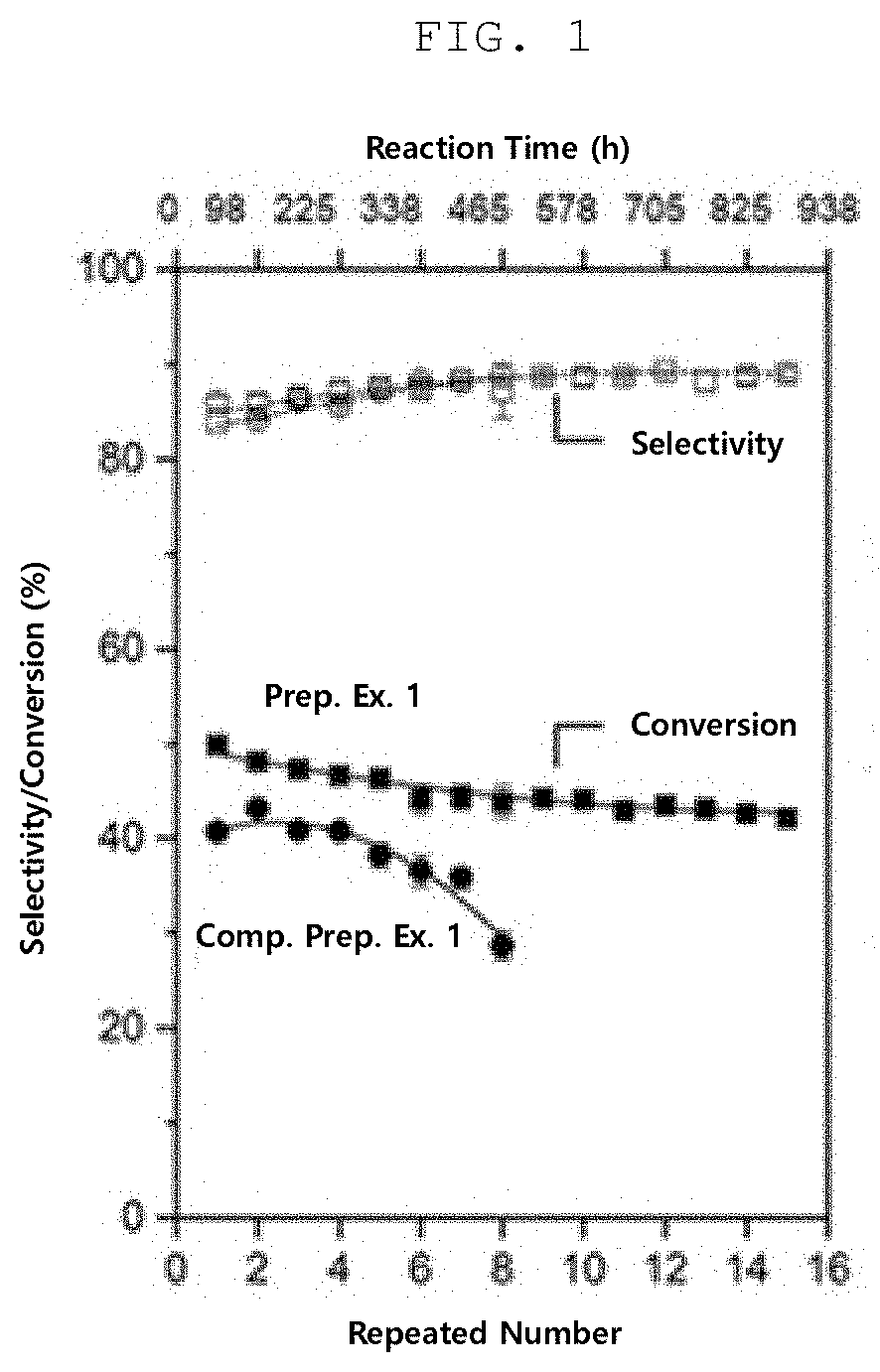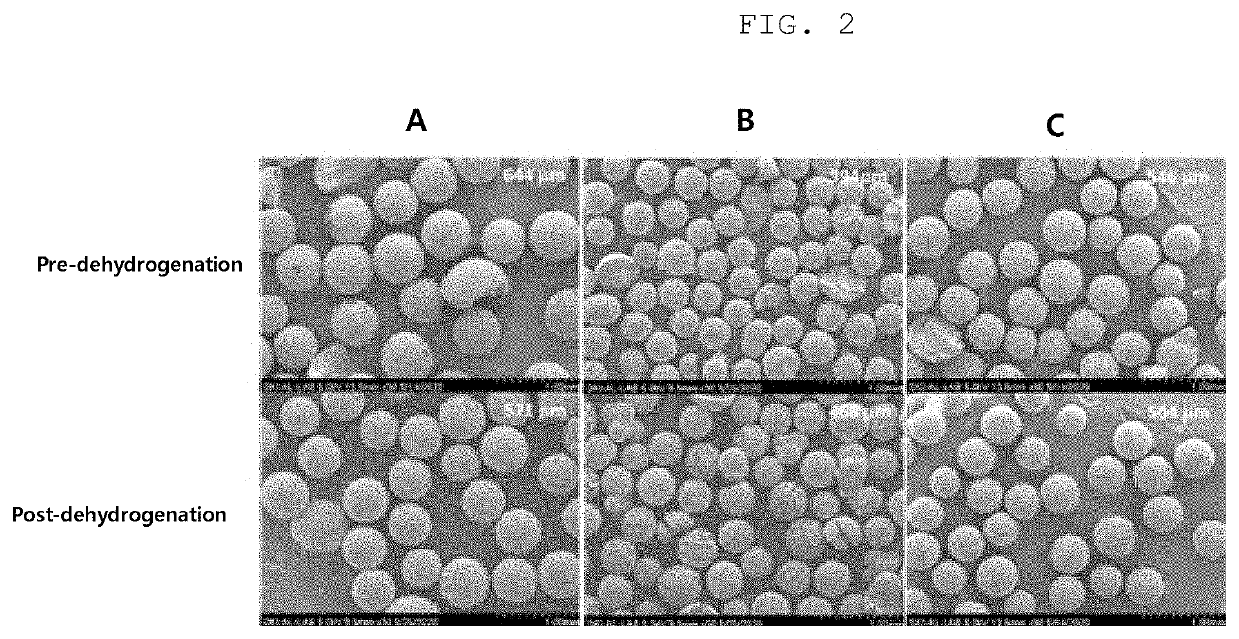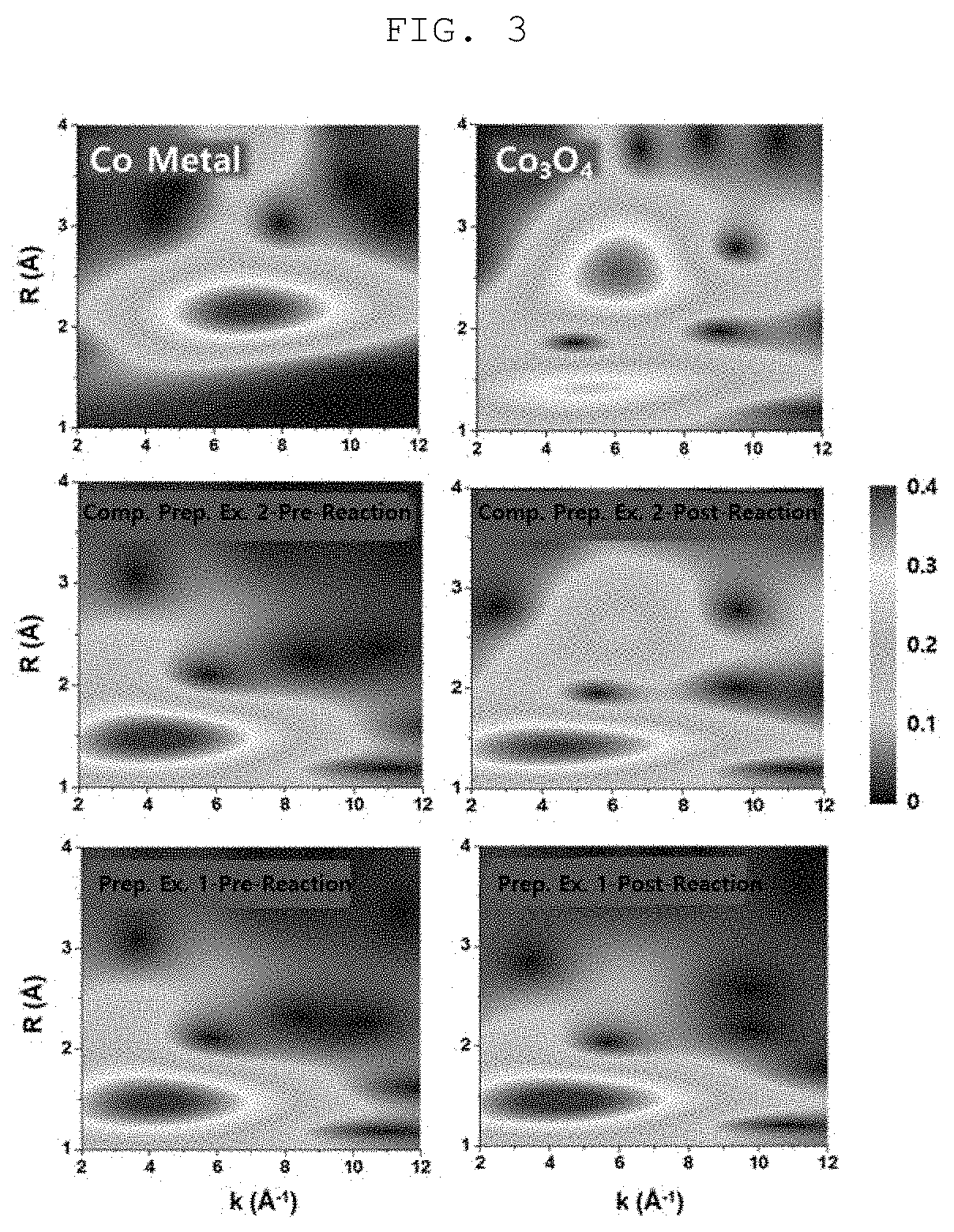Cobalt-Based Single-Atom Dehydrogenation Catalysts Having Improved Thermal Stability and Method for Producing Olefins From Corresponding Paraffins by Using the Same
a single-atom dehydrogenation and catalyst technology, applied in the field of de, can solve the problems of reducing the stability of the catalyst, causing side reactions or rapid deactivation, and difficult to secure long-term reaction stability or durability, so as to ensure thermal stability, maintain long-term catalytic activity, and ensure thermal durability
- Summary
- Abstract
- Description
- Claims
- Application Information
AI Technical Summary
Benefits of technology
Problems solved by technology
Method used
Image
Examples
preparation example 1
[0101]Among commercially available silica (tradename Q6 from Fuji), particles having an average size of 500 μm or greater, a specific surface area of 450 m2 / g or greater, and a pore volume of 0.8 cm3 / g or greater were selected, thermally treated at 850° C. for 6 hours in an air atmosphere, and then cooled to obtain thermally treated silica. Next, 10 g of the thermally treated silica was dispersed in 100 mL of distilled water, boiled at 100° C. for 2 hours, cooled, and filtered to obtain pretreated silica particles. Hereinafter, the silica that has undergone the thermal treatment and the high-temperature aqueous treatment is referred to as “post-pretreated silica”.
[0102]After the pretreatment, a dispersion of 10 g of the post-pretreated silica in 100 mL of distilled water was prepared and added with 28% by weight of ammonia water (Sigma-Aldrich) to afford a pH-adjusted aqueous dispersion of the post-pretreated silica having a pH of 11.
[0103]In a separate beaker, 0.5 g of the cobalt p...
preparation example 2
[0110]Among commercially available silica (tradename Q6 from Fuji), particles having an average size of 500 μm or greater, a specific surface area of 450 m2 / g or greater, and a pore volume of 0.8 cm3 / g or greater were selected, thermally treated at 600° C. for 6 hours, and then cooled to obtain thermally treated silica. Next, 10 g of the thermally treated silica was dispersed in 100 mL of distilled water, boiled at 100° C. for 2 hours, cooled, and filtered to obtain silica particles. Hereinafter, the silica that has undergone the thermal treatment and the high-temperature aqueous treatment is referred to as “post-pretreated silica”.
[0111]A dispersion of 10 g of the post-pretreated silica in 100 mL of distilled water was prepared and added with 28% by weight of ammonia water (Sigma-Aldrich) to afford a pH-adjusted aqueous dispersion of the post-pretreated silica having a pH of 11.
[0112]In a separate beaker, 0.5 g of the cobalt precursor (Co(NH3)6Cl3) was dissolved in 50 mL of distill...
preparation example 3
[0115]Among commercially available silica (tradename Q6 from Fuji), particles having an average size of 500 μm or greater, a specific surface area of 450 m2 / g or greater, and a pore volume of 0.8 cm3 / g or greater were selected, thermally treated at 700° C. for 6 hours in an air atmosphere, and then cooled to obtain thermally treated silica. Next, 10 g of the thermally treated silica was dispersed in 100 mL of distilled water, boiled at 100° C. for 2 hours, cooled, and filtered to obtain pretreated silica particles. Hereinafter, the silica that has undergone the thermal treatment and the high-temperature aqueous treatment is referred to as “post-pretreated silica”.
[0116]A dispersion of 10 g of the post-pretreated silica in 100 mL of distilled water was prepared and added with 28% by weight of ammonia water (Sigma-Aldrich) to afford a pH-adjusted aqueous dispersion of the post-pretreated silica having a pH of 11.
[0117]In a separate beaker, 0.5 g of the cobalt precursor (Co(NH3)6Cl3) w...
PUM
| Property | Measurement | Unit |
|---|---|---|
| temperature | aaaaa | aaaaa |
| particle size | aaaaa | aaaaa |
| particle size | aaaaa | aaaaa |
Abstract
Description
Claims
Application Information
 Login to View More
Login to View More - R&D
- Intellectual Property
- Life Sciences
- Materials
- Tech Scout
- Unparalleled Data Quality
- Higher Quality Content
- 60% Fewer Hallucinations
Browse by: Latest US Patents, China's latest patents, Technical Efficacy Thesaurus, Application Domain, Technology Topic, Popular Technical Reports.
© 2025 PatSnap. All rights reserved.Legal|Privacy policy|Modern Slavery Act Transparency Statement|Sitemap|About US| Contact US: help@patsnap.com



